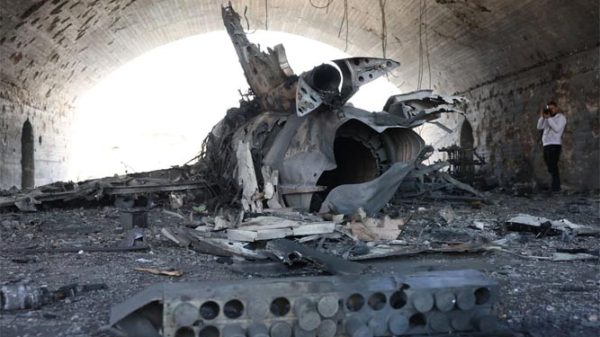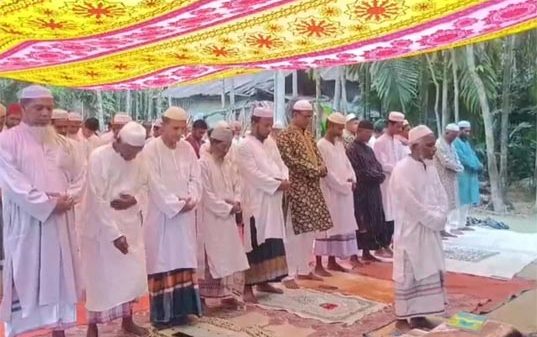Tourist hub Cox’s Bazar is set to welcome PM today

- Update Time : Saturday, 11 November, 2023, 01:11 pm
- 145 Time View

Online Desk: The tourist hub Cox’s Bazar and entire district are set to welcome Prime Minister Sheikh Hasina as she will address a public meeting and open and lay foundation stones of over a dozen development projects here today.
The projects included much-anticipated 102km Chattogram-Cox’s Bazar railway line, 1200 MW Matarbari power plant and deep seaport’s channel.
The entire district town, where the world’s longest sandy sea beach locates, wore a festive mood ahead of the premier’s visit as makeshift gates have been erected, banners and festoons carrying messages for welcoming Bangabandhu’s daughter hoisted at important points of the town.
The premier will formally inaugurate the train service at the newly built Cox’s Bazar railway station at 11am. She will begin journey by train on the new railway line from Cox’s Bazar station for Ramu station at 12pm.
Later, she will go to Ramu cantonment by road at 12.20pm. From there, the premier will go towards Matarbari Deep Sea Port Channel at Maheshkhali upazila of Cox’s Bazar to join the inaugural ceremony of the channel at 2.30pm.
Sheikh Hasina, also Awami League (AL) president, will join a public meeting at Matarbari Thermal Power Plant Project’s township ground at 3.15pm under the arrangement of AL’s Maheshkhali Upazila unit.
Ashek Ullah Rafiq, Cox’s Bazar-2 constituency lawmaker, said the people of Cox’s Bazar district are eagerly waiting to welcome Bangabandhu’s daughter Prime Minister Sheikh Hasina as the meeting is expected to turn into a human sea.
Railways Minister Nurul Islam Sujan visited the Cox’s Bazar railway construction project and the iconic station on Thursday and yesterday.
He said the people from all over the country are waiting with great expectations for the opening of the railway connectivity in tourist city Cox’s Bazar as this newly built rail link will bring dramatic changes in the tourism industry as well as industrialization connecting the national and sub-regional railway networks for the first time.
“Cox’s Bazar iconic railway station having its aesthetic architectural beauty is a matter of pride for all of us. There is no such unique structure anywhere else,” he said.
Prime Minister Sheikh Hasina will also inaugurate the 1200 MW Matarbari thermal power plant’s first unit (600 MW) located near deep seaport at Matarbari under Maheshkhali upazila in Cox’s Bazar district.
She will inaugurate the Matarbari deep seaport’s 14.3-kilometre-long artificial navigation channel stretching from the proposed terminal to the sea and lay the foundation stone for the construction of the first terminal of the port which is targeted to start operations in 2026.
The premier will also inaugurate the SPM (Single Point Mooring), which is expected to save about Tk. 800 crore annually. A single-point mooring or SPM, also known as Single buoy mooring (SrM, is a loading buoy anchored offshore, that serves as a mooring point and interconnect for tankers loading or offloading gas or liquid products.
Other projects including Matarbari Deep Sea Port’s channel, Chattogram-Cox’s Bazar dual-gauge single railway line, iconic Cox’s Bazar station, first phase of 100% Reliable and Sustainable Electrification in Hatia Island, Nijhum Island, and Kutubdia Island” project to connect isolated Kutubdia with national grid through submarine power line and construction of 595m. long PC Box Girder Bridge over Bakkhali River at Kusturi Ghat under Sadar Upazila of Cox’s Bazar district will also be inaugurated.
On the eve of the inauguration of the Matarbari power plant, State Minister for Power, Energy and Mineral Resources Nasrul Hamid said the first unit of two-unit Matarbari coal-fired power plant, each has generation capacity of 600MW, started power generation on trial basis on July 29.
The unit generated record 618 MW power as the reactor of the second unit was also installed on September 22.
According to project details, the two-unit plant needs 13,104 tons of coal per day to generate electricity when it goes in operations in full-fledged way.
The project authority also constructed jetty and silo for coal transportation and storage for the plant.
The silo has capacity to store coal for 60 days, while mother vessel having capacity of 80,000 tons of coal can easily anchored in the jetty and only 1-2 days will be required for unloading coal from the mother vessel.
A 14.3 km long and 300m wide channel was excavated to accommodate mother vessels at the power plant’s own jetty.
Sedimentation mitigation dikes have been constructed to ensure navigability, which will save channel from dredging year after year. A study showed that there was a potential of 8 million tons of sediment deposition per year.
Another challenge was constructed for ash management, but an ash pond was kept here to store ash of the power plant for a lifetime of 25 years.
There were two separate ash ponds, one covering 90 acres and other covering 600 acres of land. Coal yard has been prepared on 80 acres of land for coal storage.
The power plant was built in such a way that it cannot be affected by cyclones or tides. For this, a dam is being constructed 14 meters above sea level and infrastructure inside the dam with the height of 10 meters.
It has been designed keeping in mind the high tides. The 1991 cyclone caused a 7 meter high tide but the height of the dam is double of that.
The second unit (600 MW) will come into commercial production six months after inauguration the first unit of 600 MW.
A loan agreement was signed between the Bangladesh government and Japan International Development Agency (JICA) on June 16, 2014. While Tk. 43,921 crore will be given by JICA as project support and the remaining Tk. 7,933 crore will be provided from the own funds of Bangladesh government and Coal Power Generation Company Bangladesh Limited (CPGCBL).
The project is a multi-purpose one. The project will feature construction of imported coal load-unload jetty, power generation plant, townships, electrification of local areas, construction of power transmission lines and power plant connection roads.
Project to connect isolated Kutubdia with national grid through submarine power line: Kutubdia island of Cox’s Bazar has been connected to the national grid for the first time.
Power is being supplied to the national grid at Kutubdia through a submarine cable under the sea.The project was launched on a trial basis on April 13. From that day, 1500 subscribers of the island began to get electricity connection facilities experimentally.
Director of this project and supervising engineer of Bangladesh Power Development Board Md Farooq Ahmed said that since 1980, Kutubdia island had electricity supply for a few hours in the evening through generators.
He said that 20,000 customers of the island will be provided electricity connection in phases.
The PD said that the government has taken up a project in 2020 to bring hundred percent of the people of the country under electricity coverage.
The during of the Taka 400cr project titled ‘100% reliable and sustainable electrification of Hatia Island, Nijhum Island and Kutubdia Island’ is June 2024. But before the scheduled time, the electricity of the national grid reached Kutubdia.
Md. Farooq Ahmed said that Kutubdia has been connected to the national grid through submarine cable. A 6 km long cable runs in two lanes under the sea. There are 12 MW capacity substations, 720 km of transmission distribution lines.
596 m Long PC Box Girder Bridge on Bankkhali River: Local Government Engineering Department (LGED), Cox’s Bazar Executive Engineer Md. Mamun Khan said that under the Cox’s Bazar Airport Development Project, the ‘Cox’s Bazar-Khurushkul’ connection bridge has been built on the Bakkhali river adjacent to Kasturaghat. This is a box girder bridge.
He said that the construction cost of this 596 meter long bridge is Taka 259 crore.
The official work of the bridge started on September 1, 2019. Its construction work was supposed to be completed by August 2021, but due to the Corona pandemic and other complexities, it took until October 2023 to complete the work.
The executive engineer said that the construction of this bridge has added a new dimension to the tourism industry as this bridge will play a very important role in the expansion of Cox’s Bazar city.
Mamun Khan also said that the work of expanding the airport runway under the Ministry of Civil Aviation and Tourism is going on in the north side of Cox’s Bazar city.
The government is providing accommodation to 4,409 families of those who have become climate refugees in Khurushkul area.
This bridge will be used for their travel. Also, due to the construction of this bridge, the distance between Chattogram and Cox’s Bazar will be reduced a lot.










